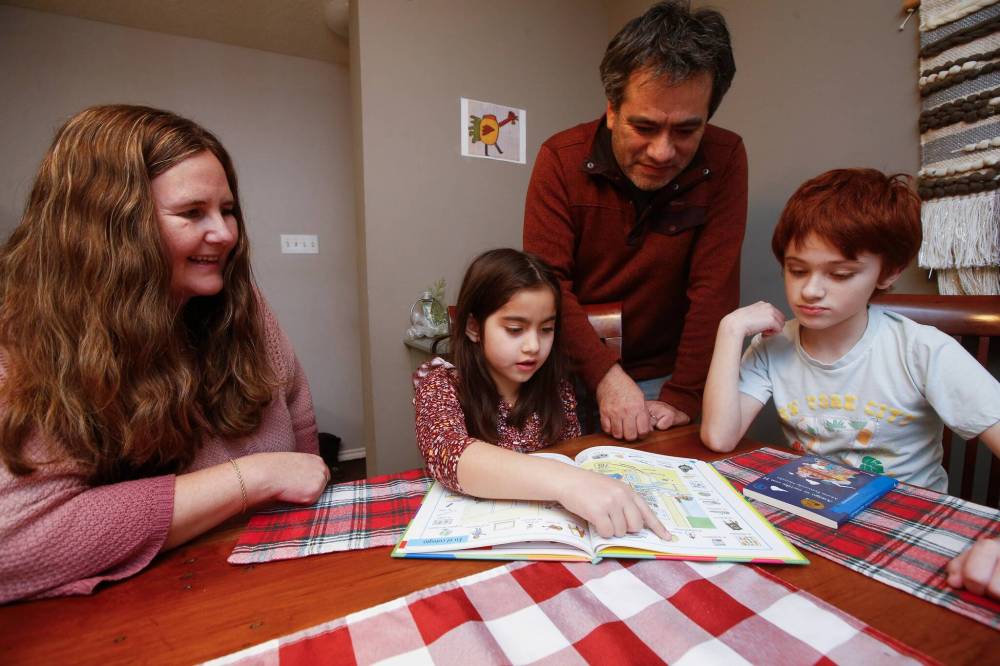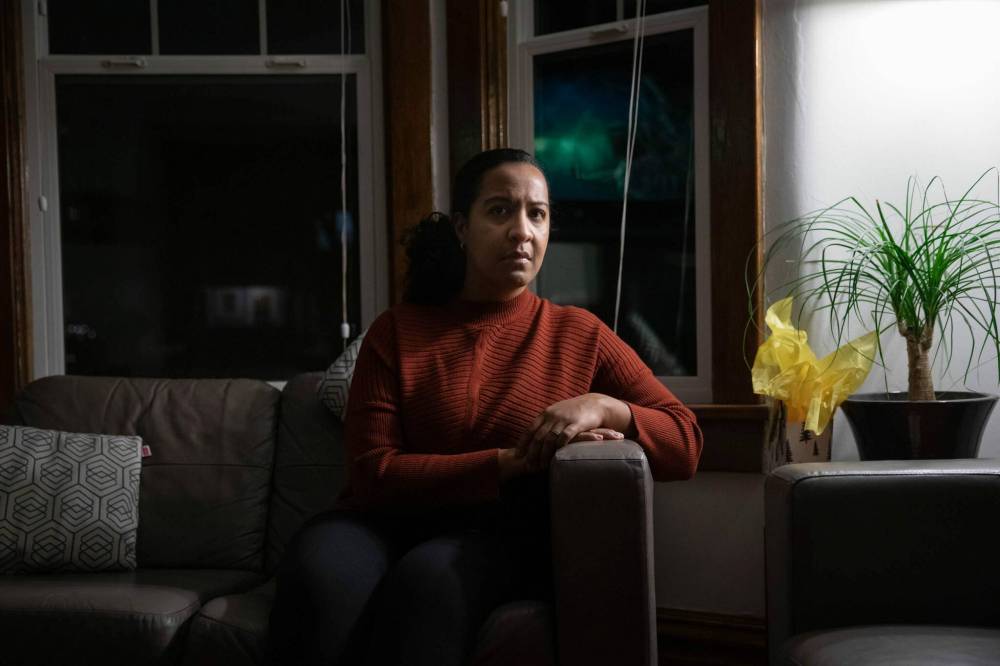Winnipeg School Division says ‘sí’ to Spanish expansion
Read this article for free:
or
Already have an account? Log in here »
To continue reading, please subscribe:
Monthly Digital Subscription
$0 for the first 4 weeks*
- Enjoy unlimited reading on winnipegfreepress.com
- Read the E-Edition, our digital replica newspaper
- Access News Break, our award-winning app
- Play interactive puzzles
*No charge for 4 weeks then price increases to the regular rate of $19.00 plus GST every four weeks. Offer available to new and qualified returning subscribers only. Cancel any time.
Monthly Digital Subscription
$4.75/week*
- Enjoy unlimited reading on winnipegfreepress.com
- Read the E-Edition, our digital replica newspaper
- Access News Break, our award-winning app
- Play interactive puzzles
*Billed as $19 plus GST every four weeks. Cancel any time.
To continue reading, please subscribe:
Add Free Press access to your Brandon Sun subscription for only an additional
$1 for the first 4 weeks*
*Your next subscription payment will increase by $1.00 and you will be charged $16.99 plus GST for four weeks. After four weeks, your payment will increase to $23.99 plus GST every four weeks.
Read unlimited articles for free today:
or
Already have an account? Log in here »
Hey there, time traveller!
This article was published 07/02/2023 (1035 days ago), so information in it may no longer be current.
Facing growing enrolment and pressure from parents, the Winnipeg School Division is expanding its Spanish bilingual program — the only one of its kind in the province — so students can complete their elementary studies in both English and español.
A handful of Earl Grey School families had registered to make a case for scaling-up the program this week, but they called off their presentations after learning administrators responded to their concerns.
“We’re really proud that Manitoba has a bilingual Spanish program and we feel that Spanish is an important language. It’s one of the most-spoken languages in the world, and that opens up a lot of opportunity for our kids,” said Jane Friesen, a mother of two.
Friesen said the community is grateful for the development and many hope it will lay the groundwork for more advanced language classes at the high school level.
JOHN WOODS / WINNIPEG FREE PRESS Jane Friesen and Ulises Cancino, who is from Chile, look over some spanish books with their children Noa, 6, and Ian, 10, in their home. 
The public school in Fort Rouge currently accepts kindergarten to Grade 6 registrants into its bilingual classes. It will grow to include Grade 7 students in the fall and finally, Grade 8 pupils in 2024-25.
The expansion is the latest in a series of recent second-language program announcements across the city. Efforts are underway to launch a Filipino bilingual program in WSD while the Seven Oaks School Division is creating a Punjabi stream next year.
“I think we’re seeing the public school system recognize that there are different options out there and that for any language, for any community to really survive and thrive, language is key and schools can really play an integral part in ensuring that children and adolescents continue to acquire that language and develop that language and become fluent in that language,” said Joël Ruest, an instructor of education at Saint Boniface University.
Ruest, who studies French immersion, said there is a common misconception that introducing young students to a second language can hinder the development of their first language. In reality, they build upon their base understanding of their mother tongue.
The academic noted second-language programs focus heavily on oral acquisition in early years so there may be “a little lag” in reading and writing compared to English peers, although research suggests students typically catch up by Grade 3 and immersion student achievement levels are on par with their counterparts.
“I think we’re seeing the public school system recognize that there are different options out there and that for any language, for any community to really survive and thrive, language is key and schools can really play an integral part in ensuring that.”–Joël Ruest, Saint Boniface University.
Cree, Hebrew, Ojibwa, Ukrainian and Spanish bilingual programs are available in WSD at present. Secondary languages are incorporated into 100 per cent of kindergarten lessons and for approximately 50 per cent of the school day in higher grades.
About a decade ago, newly elected ward 3 trustee Kathy Heppner, a certified teacher, and other outspoken parents first pointed out the absence of Spanish education in the central and culturally diverse division.
The Earl Grey program Heppner co-founded officially launched in 2016 with a single teacher and 18 kindergarteners. Since then, the second-language stream has grown to encompass four teachers who are tasked with educating upwards of 100 learners from all early-years grades.
JESSICA LEE / WINNIPEG FREE PRESS The Earl Grey program, co-founded by Kathy Heppner in 2016, has grown to encompass four teachers who are tasked with educating upwards of 100 learners from all early years grades.
“Although it may have started with the goal to bring together the Latino community, in actual fact, it has created a whole new community,” Earl Grey principal Tricia Penner said in a statement. “Families from all different cultures are considering this bilingual program as a choice for their child’s learning.”
Spanish is the primary or secondary language spoken in 1.5 per cent of all student homes, according to the division’s most recent demographics report.
The language can often be heard in Friesen’s home, given her husband is Chilean and both of their children were born in Chile.
Friesen said she’s witnessed her children become increasingly proud of their South American culture because of their Spanish lessons; their youngest used to request her father speak to her in English but she started taking interest in practising with him after being exposed to the language at school.
“It was an important way for us to sort of keep the language a part of their growing and their life… We didn’t want them to lose it once we moved here,” Friesen said, adding the school has become a community hub where newcomers from Latino countries gather, make friends and receive support as they transition into Winnipeg culture and society.
“It was an important way for us to sort of keep the language a part of their growing and their life… We didn’t want them to lose it once we moved here.”–Jane Friesen
Grade 5 student Noah Enns discovered a new favourite food — pupusas, an El Salvadoran treat he likens to a pancake with meat and cheese in the middle of it — through the Spanish stream. “I really like to learn about all the different traditions of different countries,” the 11-year-old said.
Mother Lindsay Enns said she wanted her children to be exposed to numerous cultures other than their own, including collectivist cultures, and knew she could help them with their homework because of her proficiency in the language.
A January 2023 survey of Spanish-stream families, representing about 60 per cent of all registrants, found they deeply value the sense of community within the program and the potential work and travel opportunities their children will have as a result of being multilingual.
Alicia Nijdam-Jones, a parent who conducted the poll to advocate for the expansion, noted the second-language offering has given many children the ability to communicate with family members in their mother tongue.
“We’re part of a global society… (Learning Spanish) will help them interact with the world around them and get to know perspectives that aren’t just centred around Canadian perspectives,” she said.
maggie.macintosh@freepress.mb.ca
Twitter: @macintoshmaggie

Maggie Macintosh
Education reporter
Maggie Macintosh reports on education for the Free Press. Originally from Hamilton, Ont., she first reported for the Free Press in 2017. Read more about Maggie.
Funding for the Free Press education reporter comes from the Government of Canada through the Local Journalism Initiative.
Every piece of reporting Maggie produces is reviewed by an editing team before it is posted online or published in print — part of the Free Press‘s tradition, since 1872, of producing reliable independent journalism. Read more about Free Press’s history and mandate, and learn how our newsroom operates.
Our newsroom depends on a growing audience of readers to power our journalism. If you are not a paid reader, please consider becoming a subscriber.
Our newsroom depends on its audience of readers to power our journalism. Thank you for your support.
History
Updated on Tuesday, February 7, 2023 9:29 PM CST: Corrects capitalization of español
Updated on Wednesday, February 8, 2023 8:33 AM CST: Adds special character












